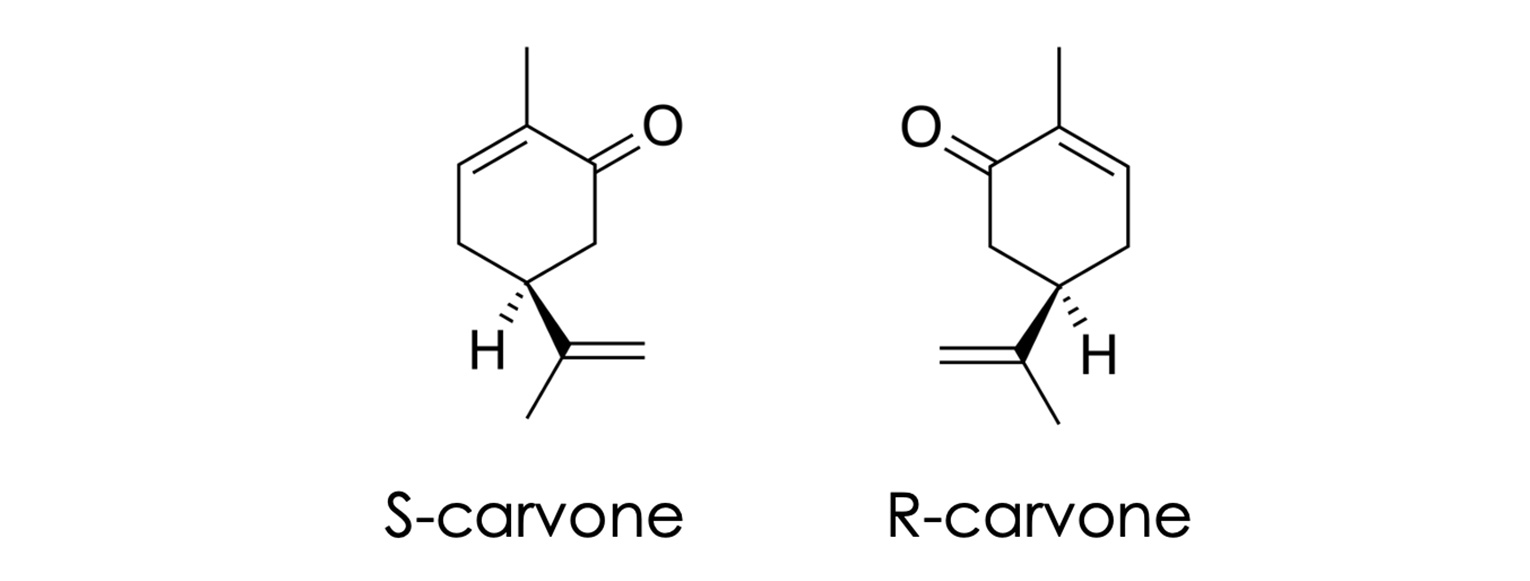There is often a confusion over gas or chemical analysis and odor recognition—the foundation of digital olfaction. Odor recognition requires a teaching phase where you train a device or solution to your odors of interest, followed by analysis and/or questioning phases where you can compare unknown odors to the database itself.
Unlike chemical analysis, digital olfaction uses a unique fingerprint for an odor that is annotated by users and compiled as part of a larger database. These fingerprints are then used for faster product development, quality analysis, end-product characterization, and to improve user experiences.
So how can this be more accurate and useful than chemical analysis? Chemical analysis shows the full quantification of all the aspects of a gas that make the odor – and those that don’t. Well, in the case of enantiomers, digital olfaction can better mimic the human experience.
Enantiomers are molecules with the same chemical formula but with a different 3D conformation that results in some cases in very different smells to the human nose. Standard analytical methods cannot differentiate them since they are mirror images of each other, but humans can. This can pose a challenge in analytical use cases where GC-MS is the primary source of analysis during formulation. To analyze these types of chemical mirrors, a specific type of GC equipment, chiral columns, is required. These specifically separate chiral isomers by typically run slowly and require optimization of the experimental set up.
In the industry, enantiomer detection is used for two broad categories of applications: ensuring that materials coming from suppliers are as optically pure as expected, and screening for new synthesis reactions.
One such common ingredient case of enantiomers is S-carvone and R-carvone—responsible for caraway and spearmint flavors respectively. Two very different smells to a human nose, but mirrors of each other from a chemical sense.

To a standard GC-MS, samples of S-carvone and R-carvone would thus be indiscriminate. And when looking at the signatures captured with our NeOse Advance, we can see that they have similar behaviors across many of our proprietary combinations of peptides.

But upon further analysis in a multi-dimensional space, we can see that these two samples are in fact quite distinct and easy to discriminate with Aryballe’s technology.

There are many established use cases for GC-MS—and for good reason as it is a gold-standard for many instrumentation techniques in labs across industries. However, when looking to analyze a formulation or product similar to the human sense of smell, digital olfaction offers a way that better mimics the human perception. One that allows organizations to transform odor data into business assets.
You can learn more on enantiomer discrimination with e-noses in this technical paper from 2020.

